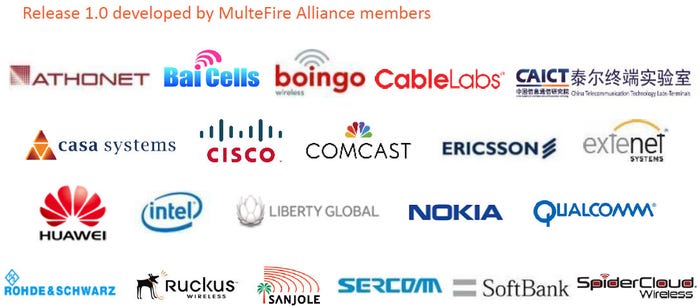MulteFire unveils wifi on steroids with release 1.0MulteFire unveils wifi on steroids with release 1.0
Over a year after it was first announced MulteFire release 1.0 is completed, promising to bring LTE-like connectivity over unlicensed spectrum.
January 17, 2017

Over a year after it was first announced MulteFire release 1.0 is completed, promising to bring LTE-like connectivity over unlicensed spectrum.
Qualcomm first mentioned MulteFire back in the middle of 2015 as a bid to combine the best of LTE and wifi, using unlicensed or shared spectrum. Today we have a clearer picture of what this entails thanks to the first release of the technology.
“MulteFire is the best of both worlds, combining the quality of service of LTE with the simplicity of wifi,” said Mazen Chmaytelli, President of the MulteFire Alliance (and also Qualcomm employee) in an interview with Telecoms.com.
The technology initially targets the 5 GHz band, where there’s half a gig of spectrum just waiting to be filled with juicy voice and data transmissions, and in the US the tech also supports the 3.5 GHz shared band. That means this is a small cell technology, much like wifi, but the big difference is the claimed LTE-like robustness, as well as the kind of seamless handover between cells seldom experienced on wifi. In other words: wifi on steroids.
But so what? We’ve already got LTE and wifi so why do we need a new technology that sits in between them? The main demand will come from enterprise, according to Chmaytelli, which should have lots of uses for establishing robust mini wireless networks.
“We could see private LTE-like networks being deployed using MulteFire in venues such as airports or industrial environments such as healthcare. We’re not saying MulteFire replaces wifi – they’re complementary technologies – but there will be some business environments where you require high reliability, safety and mass connection.”
One area in which it could possibly replace wifi, however, is in hotels and other mass consumer venues where public wifi remains such a painful and unsatisfactory experience for many. The ability to use it for neutral host networks allows access via multiple providers and one of the aims of the release was to make MulteFire as close as possible to the LAA/eLAA protocols in 3GPP releases 13 and 14.
MulteFire release 1.0 is available to Alliance members (see below) immediately and is expected to be offered publicly this summer under licencing terms yet to be specified but broadly on a FRAND basis.
There’s a fair bit of industry support for this technology and with the prospect of a capacity crunch greater than ever it’s easy to see the appeal of a supposedly cheap and easy technology such as this. But even if it does get initial traction is will have to prove itself once more once 5G emerges, which will also use unlicensed spectrum to solve performance and capacity challenges.

About the Author
You May Also Like










.png?width=300&auto=webp&quality=80&disable=upscale)


_1.jpg?width=300&auto=webp&quality=80&disable=upscale)